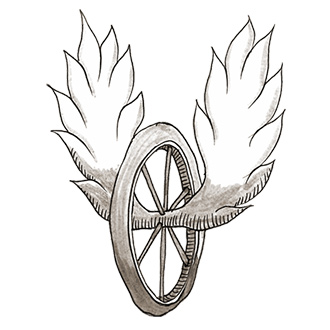
Related Questions
- What’s the difference between a motor and an engine?
- Can helicopters fly upside down?
- Can a honeybee cause a sonic boom if it travels fast enough?
- Will public transportation ever replace the automobile?
- How does an airplane stop on a runway after landing?
- Can I start my car with a voice command?
- Why can’t cars run on water instead of gasoline?
- How do the blades of a jet engine start turning?
- Will cars ever be able to drive themselves?
- Can I make my car fly?
Why don’t spacecraft burn up or veer off course during reentry from space?
They’re the correct shape, they’re coming in at just the right angle, and they’re covered in an appropriate skin…
By Jason M. RubinSpace may be the final frontier, but coming back to Earth after a visit to a planetary neighbor, or even a high orbit, can be perilous. As anyone who’s seen the movies The Right Stuff and Apollo 13 knows, a spacecraft must reenter Earth’s atmosphere at a precise angle to avoid burning up or skipping back out into space.
Well before the space program, astronomers were aware that meteorites burned up when they fell into our atmosphere. The reason, notes Allie Anderson, a graduate student in aeronautics and astronautics, is friction with air molecules (remember, there’s no air in outer space). “Objects coming back from space are traveling at many times Mach speed — faster than the speed of sound — so to keep from burning up or breaking up they must be protected from the intense heat caused by that friction.”
Heat shields, which Mission Control feared were damaged on both John Glenn’s Mercury flight and Apollo 13, were originally developed during the Cold War to protect long-range ballistic missiles so they wouldn’t blow up before reaching their targets. The same technology was later applied to the space program, Anderson says. “For the Mercury, Gemini, and Apollo programs, ablative heat shields — meaning they are designed to be damaged or destroyed in use — were made of a layer of heavy plastic resin. When it gets hot enough, the material on the shield burns up and causes a chemical reaction that pushes the hot gas away from the spacecraft.” Those early reentry vehicles were designed for one-time use, but when the Space Shuttle was being designed as a reusable spacecraft, NASA designers needed a reusable heat shield. “The Shuttle used ceramic tiles to reradiate heat outwards, with a layer of insulation between the tiles and the vehicle,” says Anderson.
The two principle factors that ensure a spacecraft can safely traverse the reentry corridor are the shape of the vehicle and its angle of reentry. Research conducted by the National Advisory Committee for Aeronautics in 1951 showed that a blunt shape lowered the heat load. “With a blunt-shaped vehicle, air molecules can’t get out of the way quickly and actually serve as a cushion, keeping the shock wave you get at Mach speed and the hot gases away from the vehicle’s surface,” explains Anderson. Also, spacecraft must hit the reentry corridor at a fairly precise angle. If the angle is too steep, there’s more friction and a greater chance of burning up; too shallow, and the spacecraft can skip back out in orbit like a stone across a pond. The reentry angle of the Space Shuttle was typically about 40 degrees, Anderson notes.
The Space Shuttle may have gone out of service, but space exploration is still a hot area, thanks to the success of Curiosity, the rover that landed on Mars in August 2012 (powered in large measure by MIT alumni). According to Anderson, NASA’s next-generation spacecraft will return to a capsule model with an ablative heat shield. As NASA sends spacecraft to targets farther and farther away, such heat shields may well be the key that allows spacecraft to go where no man has gone before.
Thanks to Happie Musonda from Mufulira, Zambia, for submitting this question.
Posted: October 16, 2012